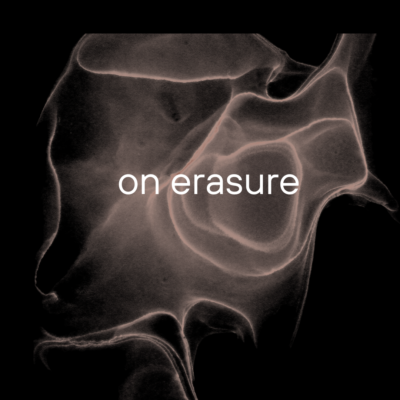Erasure is one of colonization’s most effective and inhumane strategies for collective silencing and oppression. Googling an online dictionary, the definition of erasure is: the removal of all traces of something; obliteration. The recent scrubbing of Black, Brown, Indigenous, and women heroes from Department of Defense websites is a blatant attempt to obliterate the diversity that strengthens, protects, and, when necessary, defends the United States of America. Recently, important content—such as historical accounts of the Holocaust, resources on sexual assault, suicide, and DEI—was removed from the websites of federally funded organizations. Some of this has been restored. However, the cruelty of that action can never be undone.
Any action that intends to erase initiates a ripple that aims to disengage future generations from understanding and knowing essential memories of a shared collective truth. Erasing the stories of the heroic Tuskegee Airmen and Navajo Code Talkers is a disgrace. Equally troubling are the pressures placed on federally funded organizations and universities to whitewash their language—removing essential terms like Indigenous, trauma, BIPOC, intergenerational, multicultural, and more. Watch that space. While some of the scrubbed information has been restored after public outcry, it may very well disappear again. My father, who was a Marine in the World War II era, told me many times about how the Code Talkers’ fierce and unique warriorship won that war. I can’t imagine any Marine who would tolerate the dismissal of the courage and contribution of any other Marine. If my dad exemplified anything from his time there, it’s that loyalty is in their blood.
Erasure is on the same continuum as the dismissal, denial, and gaslighting of another’s experience. It is collective “othering.” It is both not seeing someone and seeing them as less than. Recently, while walking on an icy path with a family member, I had a moment that felt like a “droplet” of this. Post-surgery, I still struggle to walk on ice and to do many things I used to do—such as run and dance—due to my disability. I believe I will be able to do all these things again (I know my own persistence!). I am also comfortable with the fact that I am currently mobility disabled. I know this doesn’t make me less of who I already am.
As the surface became slippery, I mentioned several times that I needed to go slow, felt a bit uncertain, and might need support. After the third or fourth such request, I asked for help. In asking, I said something like, “This is hard for me because of my current disability.” Within seconds, they said, “You are not disabled,” in a harsh and dismissive tone. It felt like a gut punch.
The rest of the conversation was tough, and I ended it by inviting my family member to reflect on their discomfort with my disability. They insisted that their words and refusal to acknowledge this straightforward fact were “to lift me up.” They did the opposite: I felt myself flattening down. It hurts to be unseen. That is true in any context of denial, dismissal, othering, and erasure. I have no problem with the both/and of my life right now: I am still disabled from spinal injuries and surgery, and what lifts me up is knowing that my own commitment, courage, and persistence to heal can lead to my full recovery.
Dismissing another person’s stated sense of self reflects what we are not willing to see, accept, or name. These personal erasures of “just one” send ripples too—ripples that may forever mar the relationship, because to be unseen undermines trust. My personal example also highlights how disabled folks are constantly forced to accommodate an ableist world, rather than be supported and seen within environments that yield and adapt to us. I believe this is a form of both othering and individual erasure.
Whether it’s a personal moment or a national website, these large and small injustices undermine the sense of “safe as can be,” and the trust that weaves webs of connection foundational to our shared humanity. It signals to the communities being erased that they are no longer seen in a way that honors, respects, and welcomes. This should never be taken lightly. One of my first Indigenous teachers taught me to be very mindful of every word I spoke, because when words leave our mouths, they have energy—and that energy continues rippling through the world. The same is true of actions, and those ripples can be even more potent and travel longer distances.
To counter erasure, we must engage in conscious remembrance. Conscious remembrance can include a continuum of actions, from data hoarding (see resources) to ritual. The brilliant documentary Librarians, which played at Sundance 2025, shows how librarians are now on the frontlines, resisting the erasure of decades of literature and history. We all have inner libraries of history and memories that are the foundation of who we are. All our ancestors and their actions and lives—evolutionary and familial—are the trail of breath and love that brought us into our own lives.
Memory is in our bones. History is not static; it breathes and moves us. This can never be erased. My way of remembering is to dance the sacred ceremonial dances my ancestors danced. Each step ignites my bones’ knowing. Evolutionary, familial, and personal development—all of it lives in our bones. Reconnecting to practices, movements, rituals, and rhythms that express our origins, ancestry, and heritage helps us re-member. Indigenous wisdom teaches that we are much less likely to become lost when we engage all the layers of story—layers that creativity, ceremony, and movement are taproots to.
We may not recall information linearly, but we will reconnect to the imprints of our ancestors, whose lives helped shape us. This is the truth that lives beneath words and policies—the truth that upholds our identities and names, even when others refuse to see them.
